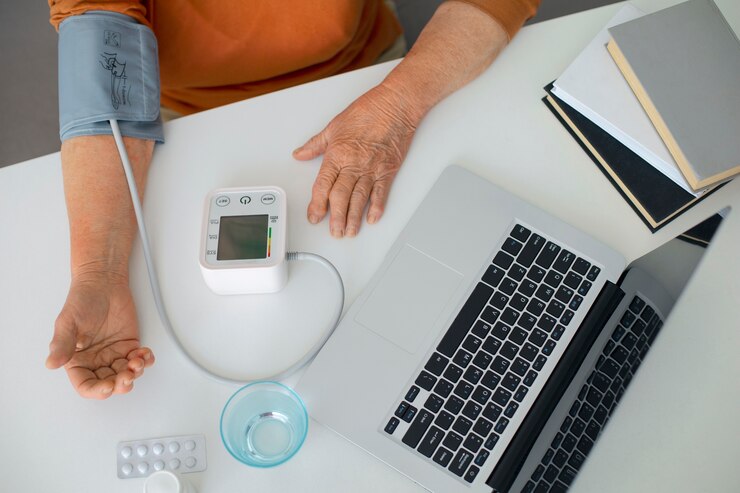Chronic kidney disease (CKD) and end-stage renal disease (ESRD) often necessitate renal replacement therapy. Hemodialysis (HD) and peritoneal dialysis (PD) are the two most common dialysis methods used to treat these conditions. Each method has distinct advantages and disadvantages, and the choice between them depends on various factors, including patient preferences, medical conditions, lifestyle, and nephrologist recommendations. This article provides a detailed comparison between hemodialysis and peritoneal dialysis.
Hemodialysis
Principle and Functioning
Hemodialysis is a medical procedure where a machine filters waste products and excess fluids from the blood. The patient’s blood is drawn via a vascular access, passed through a dialyzer (or artificial kidney) that contains a semi-permeable membrane, and then returned to the body.
Procedure
- Vascular Access: Patients require a reliable vascular access, such as an arteriovenous fistula, graft, or central venous catheter.
- Filtration: Blood is pumped out of the body and through the dialyzer, where toxins and excess fluids are removed.
- Blood Return: The cleaned blood is returned to the body.
Frequency and Duration
Hemodialysis is typically performed three times a week, with each session lasting about four hours.
Advantages
- Efficiency: High efficiency in removing toxins and excess fluids.
- Medical Supervision: Performed under medical supervision in a dialysis center.
- Advanced Monitoring: Continuous monitoring of vital signs and dialysis parameters.
Disadvantages
- Time-Consuming: Requires frequent trips to the dialysis center.
- Side Effects: Risk of hypotension, muscle cramps, and post-dialysis fatigue.
- Vascular Complications: Risk of infections, thrombosis, or aneurysms at the access site.
Peritoneal Dialysis
Principle and Functioning
Peritoneal dialysis uses the peritoneum, a natural membrane in the abdomen, as a filter to remove waste products and excess fluids. A catheter is surgically inserted into the peritoneal cavity, where a sterile dialysis solution (dialysate) is introduced.
Procedure
- Introduction of Dialysate: Dialysate is introduced into the peritoneal cavity via a catheter.
- Fluid Exchange: Waste products and excess fluids pass from the blood into the dialysate through the peritoneal membrane.
- Drainage: After several hours, the used dialysate, now containing waste products, is drained and replaced with fresh solution.
Types of Peritoneal Dialysis
- Continuous Ambulatory Peritoneal Dialysis (CAPD): Multiple manual exchanges of dialysate per day.
- Automated Peritoneal Dialysis (APD): Automated exchanges of dialysate during the night using a machine called a cycler.
Advantages
- Flexibility and Independence: Patients can manage their treatment at home and adjust the schedule of exchanges according to their daily needs.
- Fewer Dietary and Fluid Restrictions: Better fluid and electrolyte management due to frequent exchanges.
- Preservation of Residual Kidney Function: Better preservation of remaining kidney function.
Disadvantages
- Risk of Infection: Risk of peritonitis, an infection of the peritoneal cavity.
- Physical Constraints: Discomfort due to the presence of fluid in the abdomen.
- Training and Rigor: Requires thorough training and strict adherence to sterile technique.
Comparison of Both Methods
Efficiency
- Hemodialysis: Highly efficient in removing toxins and fluids in short, intense sessions.
- Peritoneal Dialysis: Continuously effective, with frequent exchanges preventing significant fluctuations in toxin and fluid levels.
Comfort and Quality of Life
- Hemodialysis: Can be restrictive due to frequent center visits and post-dialysis side effects.
- Peritoneal Dialysis: Offers more flexibility and independence but requires self-management and discipline.
Medical Supervision
- Hemodialysis: Continuous medical supervision during dialysis sessions.
- Peritoneal Dialysis: Less frequent supervision, requiring regular follow-ups with a nephrologist.
Risks and Complications
- Hemodialysis: Vascular complications and immediate side effects.
- Peritoneal Dialysis: Risk of peritoneal infection and physical discomfort from continuous fluid presence in the abdomen.
Detailed Comparison: Hemodialysis vs. Peritoneal Dialysis
Suitability for Patients
Hemodialysis
- Acute Kidney Failure: Hemodialysis is often used for acute kidney failure due to its ability to quickly and efficiently remove waste products and excess fluids.
- Severe Uremic Symptoms: Ideal for patients with severe symptoms like confusion, pericarditis, or bleeding tendencies, where rapid removal of toxins is crucial.
- Patients with Home Care Limitations: Suitable for those who might not have the capability or support system to manage dialysis at home.
Peritoneal Dialysis
- Home-Based Care: Best suited for patients who prefer treatment at home and can manage the responsibility.
- Residual Kidney Function: Patients with some remaining kidney function benefit as PD can help preserve this better than HD.
- Active Lifestyle: Ideal for individuals who desire a flexible treatment schedule to maintain an active lifestyle, including work and travel.
Cost Considerations
Hemodialysis
- Initial Costs: Generally higher due to the cost of machines and the infrastructure of dialysis centers.
- Ongoing Costs: Includes travel expenses to the dialysis center, healthcare professional fees, and maintenance of vascular access.
Peritoneal Dialysis
- Initial Costs: Lower initial costs for equipment compared to hemodialysis machines.
- Ongoing Costs: Costs for dialysate, supplies for exchanges, and regular follow-ups with healthcare providers. Overall, PD can be more cost-effective due to reduced need for travel and hospital resources.
Lifestyle Impact
Hemodialysis
- Travel and Commute: Regular travel to the dialysis center can be time-consuming and burdensome.
- Diet and Fluid Restrictions: More stringent dietary and fluid intake restrictions to prevent complications between sessions.
- Post-Dialysis Fatigue: Many patients experience significant fatigue and need recovery time after each session.
Peritoneal Dialysis
- Home Convenience: Allows patients to perform dialysis in the comfort of their home, integrating it more seamlessly into their daily routine.
- Flexible Scheduling: APD allows for nighttime exchanges, freeing daytime for other activities.
- Fewer Restrictions: Generally allows for a more liberal diet and fluid intake due to continuous toxin removal.
Risk of Complications
Hemodialysis
- Infection Risk: Risks associated with vascular access, including infections and clotting.
- Cardiovascular Stress: Rapid fluid and toxin removal can strain the cardiovascular system, leading to potential issues like hypotension.
- Access Site Complications: Long-term use of vascular access sites can lead to complications like aneurysms or stenosis.
Peritoneal Dialysis
- Peritonitis: A serious infection risk in the peritoneal cavity, which requires prompt treatment.
- Catheter Issues: Potential for catheter blockages or infections at the insertion site.
- Hernias: Increased risk due to the pressure of the fluid in the abdomen.
Long-Term Outcomes
Hemodialysis
- Survival Rates: Generally, similar survival rates compared to PD, though individual outcomes vary based on overall health and comorbid conditions.
- Quality of Life: Quality of life may be affected by the constraints of center-based treatment and associated fatigue.
Peritoneal Dialysis
- Survival Rates: Comparable to HD, especially in the first few years of treatment.
- Quality of Life: Often higher quality of life reported due to greater independence and flexibility.
Training and Support
Hemodialysis
- Healthcare Team: Patients receive regular support and supervision from a dedicated healthcare team during treatment sessions.
- Training: Minimal training required for patients as healthcare professionals handle most aspects of the treatment.
Peritoneal Dialysis
- Self-Management: Requires thorough training on sterile techniques, catheter care, and managing exchanges.
- Ongoing Support: Regular check-ins and support from healthcare providers to monitor and address any issues.
Conclusion
The choice between hemodialysis and peritoneal dialysis depends on individual factors. Hemodialysis is often preferred for its rapid efficiency and medical supervision, whereas peritoneal dialysis is valued for its flexibility and lesser impact on daily life. A comprehensive discussion with a nephrologist, considering the specific medical conditions, personal preferences, and lifestyle of the patient, is crucial to determine the most appropriate dialysis method.
Stay tuned for more news and updates on Infinite Insight Hub!



